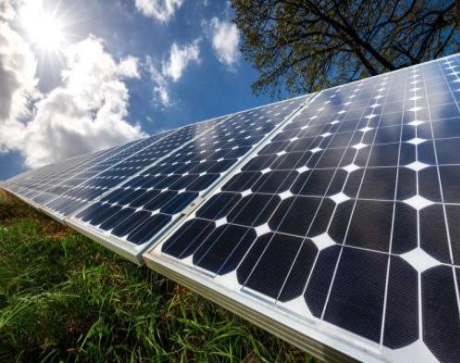BETTER TOUCH BETTER BUSINESS
Contact Sales at Litel Technology
Power output is an important metric for your home or commercial solar panel system. When you buy or install a solar photovoltaic (PV) energy system, the price you pay is typically based on the total power output of the solar panels in the system (expressed in watts or kilowatts). Solar panel wattage represents a solar panel’s theoretical power production under ideal sunlight and temperature conditions. Wattage is calculated by multiplying volts x amps where volts represents the amount of force of the electricity and amperes (amps) refers to the aggregate amount of energy used. The financial savings you derive from the solar system is a result of the electric energy that it generates over time (expressed in kilowatt-hours).
Standard Solar Panel Sizes
Traditional solar panels come in two common configurations: 60-cell and 72-cell. The standard dimensions for each option are:
60-cell panels: 39″ x 66″ (3.25 feet x 5.5 feet) 72-cell panels: 39″ x 77″ (3.25 feet x 6.42 feet)
These are the standard solar panel sizes for most residential and commercial installations, give or take an inch on either side. (There’s going to be a bit of variation because manufacturers use different frame sizes.)
There are other panel size configurations on the market, but they are much less common. For example, Panasonic offers 96-cell panels which measure 41.5” x 62.6”.
However, the standard 60-cell and 72-cell panel sizes are by far the most common in the industry.
How Big Is the Average Solar Array?
The average American uses 867 kWh of electricity each month. It would take a 6.5 kW solar array to offset 100% of that usage.
The 60-cell solar panels we currently stock range from 285W to 315W, and our stock of 72-cell panels ranges from 335W to 375W. We can figure out approximately how many panels it would take to build a 6.5 kW (6500-watt) system:
6500W / 285W = 22.8 (23 panels) 6500W / 315W = 20.6 (21 panels)
6500W / 340W = 19.1 (20 panels) 6500W / 375W = 17.3 (18 panels)
An average-sized solar system will contain 18-23 panels depending on the efficiency of the panels you use.
Here’s how that translates to physical system size. Let’s compare the least efficient panels (285W / 60-cell) to the most efficient (375W / 72 cell) to get a sense for how much space the array might take up:
375W 72-cell panels (9×2 array) 29.25 ft. x 12.83 ft. = 375.38 sq. ft.
285W 60-cell panels (8×3 array) 26 ft. x 16.5 ft. = 429 sq. ft.
In total, an average-sized solar system will take up 375 – 429 square feet. That system can be mounted on your roof, or on a ground mount somewhere on your property. The exact size will depend on panel wattage and the layout of the array.

The other use case to look at is small panels for mobile/remote use. These are the panels used for RVs, boats, and remote applications like solar-powered streetlights. Unlike traditional 60 and 72-cell panels, which are standardized across the industry, smaller panels come in a wide range of sizes. Tiny 5-watt panels take up less than 1 square foot of space. Picking the right panels for your boat or RV comes down to making the most out of the limited space available to you. Though full-sized panels can certainly work on the road, you often won’t have the space to mount them, so most people with RVs or boats need a smaller option. Typically these panels come in standard 12-volt or 24-volt output.
What does the wattage of a solar panel mean?
The battery board is like a generator, the wattage is its power, the common 250w, 240w, 235w boards, and of course the small ones less than 100w. The principle of connecting the battery is like charging the battery, the positive and negative poles of the battery plate and the positive and negative poles of the battery can be aligned and inserted.
How to calculate solar panel wattage?
Some basic factors to consider are as follows:
solar panel efficiency
Location
solar panel orientation
Solar panel wattage x average sunshine hours x 75% = daily watt-hours. As an example, let's say you have 250-watt solar panels and live in an area that gets 5 hours of sunlight per day.
2.250 watts x 5 hours x 0.75 = 937.5 watt hours. 3.937.5 / 1000 = 0.937.
how to determine solar panel wattage?
Let's get into some math formulas. A simple formula for calculating the output of a solar panel is: Average sunshine hours x solar panel watts x 75% = daily watt-hours
A solar panel is a device that converts solar radiation directly or indirectly into electrical energy through the photoelectric effect or photochemical effect by absorbing sunlight. The main material of most solar panels is "silicon". It is so large that its general use has certain limitations. However, the solar AC power generation system is composed of solar panels, charge controllers, inverters and batteries; the solar DC power generation system does not include the inverter. In order to enable the solar power generation system to provide sufficient power for the load, it is necessary to reasonably select each component according to the power of the electrical appliance.
Copyright © 2025 Guangzhou Litel Technology Co.,Ltd. | All Rights Reserved
We are here to help you! If you close the chatbox, you will automatically receive a response from us via email. Please be sure to leave your contact details so that we can better assist